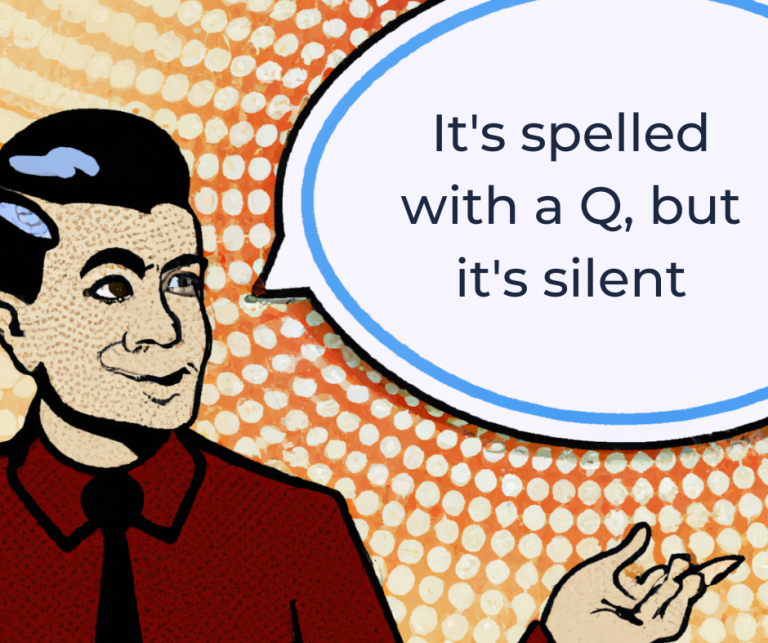
If you’re lucky enough to find a clear, pronounceable, and suggestive name that doesn’t have a competing brand or an active trademark, don’t get discouraged if the domain or one of the matching social extensions isn’t available.
GOLDEN
COMBO
In a perfect world, every brand would have the same name on every media channel. From the .com website address to Twitter, Facebook, Instagram, and other handles. But these Golden Combos are either very rare or very expensive, and finding one might not be worth the effort or expense.

What is a good brand name?
A good name can help a brand achieve its business goals by being:
1. Clear, short, and simple to understand
2. Pronounceable (the easier it is to say, the likelier it will stick)
3. Indicative of what you’re selling (it helps)
But a good company name on its own is like an airline ticket without a passport, good in theory. For most businesses, the main customer touchpoint is the website and its address is the domain name.
DOMAIN
Good domain names become scarce over time. Most nouns, Western names, commercial-sounding terms and cute plays on words are already in use. The remaining handful of catchy, concise and descriptive domain names (e.g., BestBuy.com) can cost thousands or even millions.
The domain crypto.com was recently sold for $12 million, which goes well with the stadium—formerly known as the Staples Center—the company bought for $700 million and renamed Crypto Arena.
When purchased from the source (a registrar or ICANN), domains usually cost south of a hundred dollars (to be paid annually). But the domain industry is filled with “fishing” investors who bank on someone needing a good domain name and inflate the price. They spread their cobweb by purchasing a lot of “good” (starting with the .com) domains at a significant discount, and like spiders, wait for domain-seeking butterflies.
$$$$$
It pays off in the long run for those who have a large portfolio of domains, or a few extremely valuable ones. But since domain traders are in domain investing and not in the domain development industry, the only thing they can do is wait.
Marketplaces like brandbucket.com list a variety of premium domains submitted by domain owners. Domains that get accepted get sold for a markup, unheard of in illegal industries. A domain purchased for $49 can sell for $8,000 (I have receipts). It doesn’t take much to claim a social media name, either, and some investors package the whole thing for an ever-higher premium.
As a result, the likelihood of finding an available and reasonably priced .com domain (ideally but not necessary), as well as all the matching handles, profile names, and @’s, is very low. New brands either foot the bill or figure out an alternative solution. (Unless there’s a fundamental change, finding a good domain will become nearly impossible, not to mention finding a Golden Combo.)
But a consistent brand name across channels, or even the right domain extension, doesn’t matter that much anymore. Eventually, domains and handles will be replaced with QR codes and RFID readers. And those will evolve into something else (e.g., the palm of your hand). One of the last bastions of brand name ownership could be the possession of the intellectual property.

Who owns the trademark and brand recognition?
The domain industry has a weakness. One cannot claim a trademark unless there’s an active business with the same name. If you secure the trademark, you have claims for other names, or at least exclusivity to the commercial use of the trademarked name.
Other individuals or organizations that use the same name aren’t supposed to profit from it because of the trademark, rendering their brand name or social channel handle practically useless.
Enforcing a trademark is another layer of complexity, and most brands don’t bother. (Don’t forget to consult with a trademark attorney.)
TRADEMARK
Veteran brands like Pepsi secured their brand’s consistency by registering the trademark, domain, and major social platform profiles. Other companies are less insistent on consistency and register only the profiles they need.
Not every social media page has a linked website, and not every website has associated social media channels. (And no one needs them all.) A company that owns the .com domain doesn’t necessarily own the trademark (and vice versa).
Who's
IN THE
MIND?
Even ownership of a trademark isn’t definitive. To avoid infringement, companies either change the spelling, or add another word to the name (there are likely hundreds—if not thousands—of companies with the word Apple in the name).
Regardless of the apples out there, nine out of ten people would default to Apple the technology company over Apple Industries, Apple Bank, or even the fruit. What matters for brand recall and resonance is:

Who’s in the mind?
Earning a place in the mind is easier than trying to force it with a rule. A trademark protects companies from infringement, but it doesn’t secure a place in the customer’s mind.
Kleenex is a tissue brand, and tissues are Kleenex. Competing with Kleenex for the concept of Kleenex (tissue) is probably a fool’s errand, since the concept of soft tissues in a box is “occupied in the mind”.
There’s no point naming a company in another industry—Kleenex Carpets, for example—since in consumers’ minds, it would only mean that the original Kleenex branched out into the carpet industry rather than a new carpet company naming itself Kleenex.
Dislodging concepts and changing people’s minds in general ranges from difficult to impossible. In either case, it’s expensive and hardly ever fruitful.
A HUMBLE
SUGGESTION
A meaningful, “good” name is more significant than a good domain and social profile names (in most cases).
Prioritize your search based on:
1. Available in the mind
2. Communicates your message
3. Trademark-free
4. Has a relevant domain availability
5. Has compatible social media handles
Don’t obsess over
“the right” domain name
After coming up with a list of names that don’t have a live trademark, search for domain options. If you’re fortunate enough to claim the .com domain, run with it. If you’re not, don’t give up on the option. Consider alternative domain extensions, such as .co, .net, or the more esoteric ones, such as .hotels, .marketing, and others.
Some people still consider anything other than the traditional .com to be iffy, but the .com monopoly is crumbling, and alternative extensions are being adopted by brands and customers alike. (Emerging categories, like .AI, adopt their native extension as the main one.)
With a list of trademark-free names that have an available domain name, consider how important social channels are to your strategy and which channels matter the most. Perhaps some are more significant than others, and you can prioritize.
For the digital channels that matter most—but don’t have an available handle—try figuring out something as close as possible to the original name while adding meaning and context. Read your alternative as the customer—is the name relatively consistent? Does it “make sense”? If it doesn’t, remove it from the list.
An imperfect brand name combo isn’t the end of the world
The handle instagram.com/tesla does not belong to the Tesla brand, most of us know. (Makes you wonder how many people follow that account by mistake.) Tesla’s name on Instagram is @Teslamotors and I’m not sure the addition matters at all. If anything, Tesla, with 9.5 million followers, surpassed Pepsi with 1.7 million followers, in a relatively short period of time, in spite of Pepsi owning the channel-consistent @pepsi name.
The more intent, effort, and thought that go into consistency, the more intuitively people make the connection.
MIND
DOMAIN
SOCIAL
TRADEMARK
A good name is more important than the right domain extension or social media handle, but a unique value proposition and a strong brand are even more important than that.
If people want something enough to stand in line, they’ll recognize its name, even if it’s Yves Saint Laurent. But don’t count on it; fire on all cylinders. Create undeniable value, find a good name, build a strong brand, and tell a powerful story.
OWN THE MIND
Poker players who wait for a single card to complete a perfect hand rarely win. The players who do make the best use of the hand they were dealt.
Good luck!
For questions and assistance, feel free to email, or
schedule a complimentary call.
Creative was made with the help of DALL-E
Share on:

